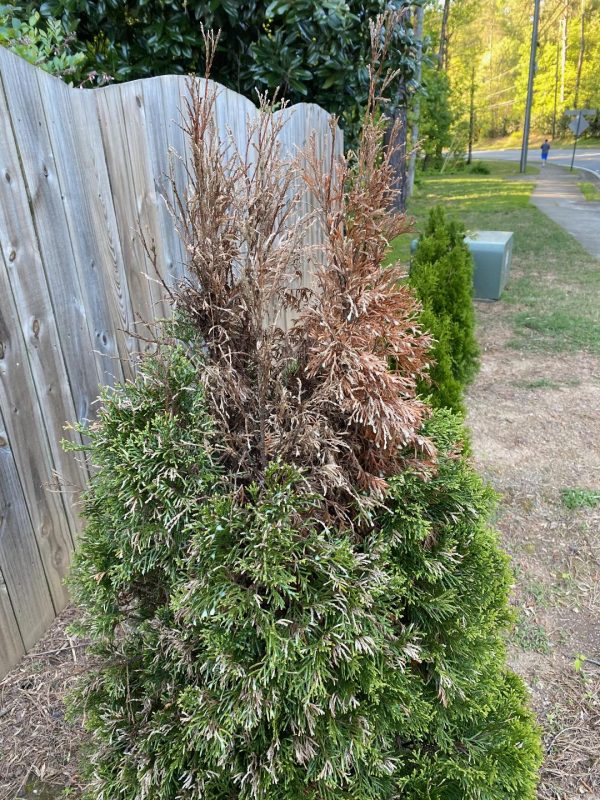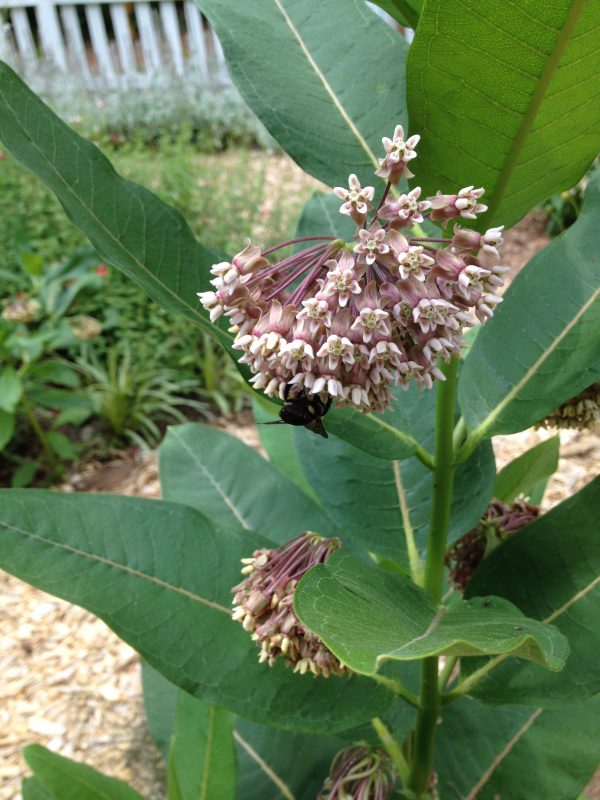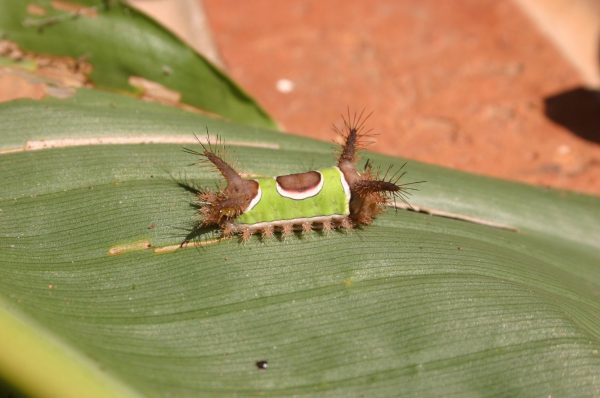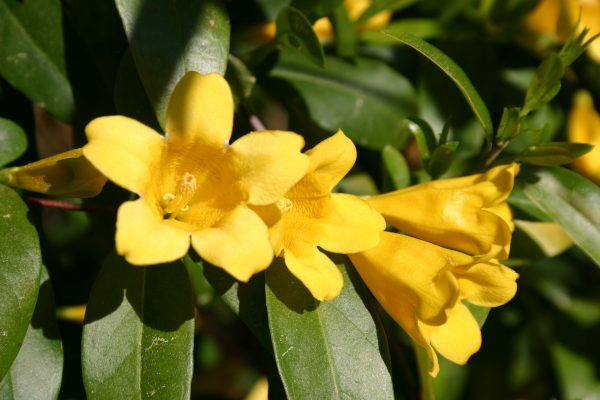Pomegranate
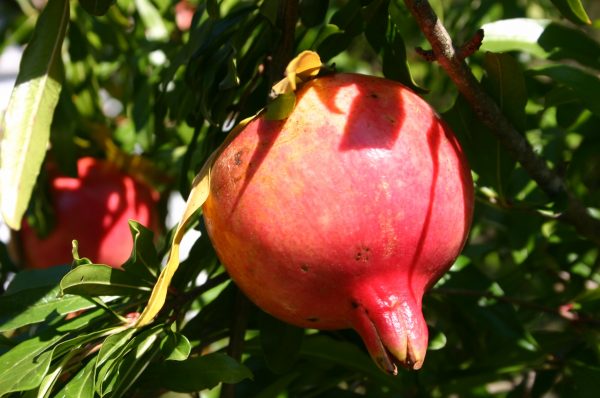
Punica granatum
Pomegranates grow as dense, bushy shrubs 6 to 12 feet tall with thorny, slender branches. Where winters are mild they may be trained into small, multi-trunked trees.
• More detailed information can be found in The Georgia Fruit & Vegetable Book by Walter Reeves and Felder Rushing
• See also Pomegranate Production in Georgia
Home Garden Pomegranates in South Carolina
Orange-red, bell-shaped flowers appear on new growth in the spring and summer. The leathery fruit contains numerous seeds surrounded by sweet pink, juicy pulp. One way to enjoy the fruit is to roll it firmly on a hard surface then cut a hole in the end to suck out the juice. This is best done just before you bathe because pomegranate juice stains are difficult to remove from clothing. Commercially, the juice was once used to make grenadine syrup, the red coloring in a tequila sunrise mixed drink. Pomegranates make nice ornaments for fruit bowls or Christmas wreaths.
Plant Pomegranates in full sun. They can tolerate many soil types and some flooding. Proper watering is important in growing Pomegranates because adequate soil moisture is necessary to control fruit splitting. For new plants use 1 ounce of 10-10-10 per foot of bush height three times a year (early spring, late spring and summer) applied evenly in a circle about 18 inches in diameter with the plant in the center. Continue to increase the diameter of the circle and the rate as the plants grow, up to a maximum of 8 ounces per application when the plants are 8 feet tall. Light annual pruning encourages growth of new fruit spurs. Pomegranates may be damaged by unseasonably low temperatures in the fall, winter or spring and in mid-winter by temperatures below 10 degrees F.
UGA horticulturist Dan MacLean recommends ‘Nikitski ranni’ and ‘Cranberry’. “They both produce well (30-40 lbs/tree under minimal orchard management conditions). ‘Nikitski ranni’ (ranni means early) produces a bright red, consistently sized fruit, that has a slightly tart, but very appealing taste. ‘Cranberry’ produces a slightly darker red, slightly sweeter fruit (relative to ‘Nikitski ranni’), but also produces a much taller and wider tree (Cranberry has the largest trees in our block). Across all factors we have considered thus far, these are the two best performers under GA conditions.” ‘Wonderful’ doesn’t seem to grow well in Georgia.
If you find a heavy-fruiting Pomegranate at an abandoned home place, it can be propagated by hardwood cuttings. Contact your local Extension office (1-800-ASKUGA-1) for woody plant propagation details.
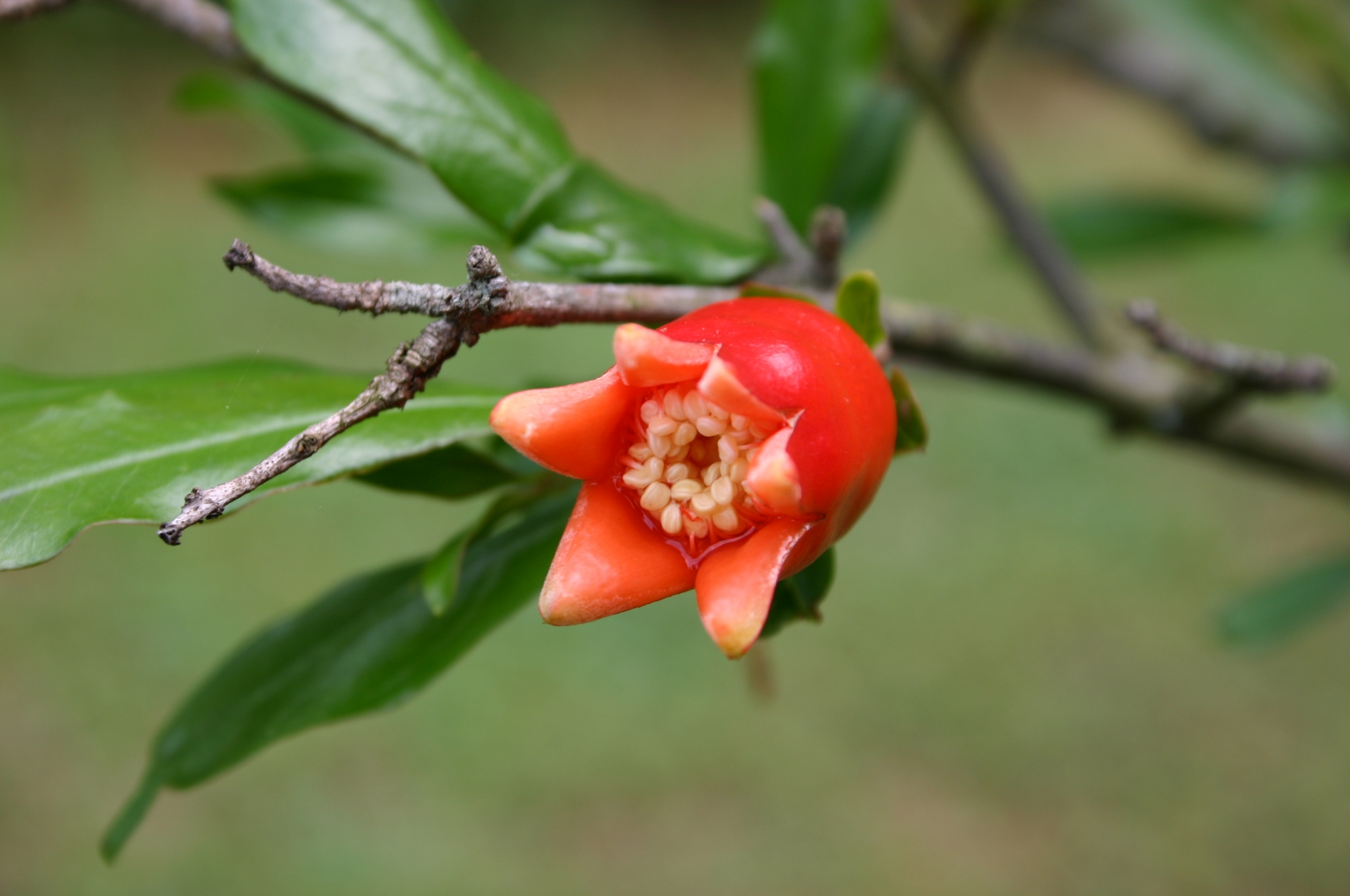
pomegranate flower
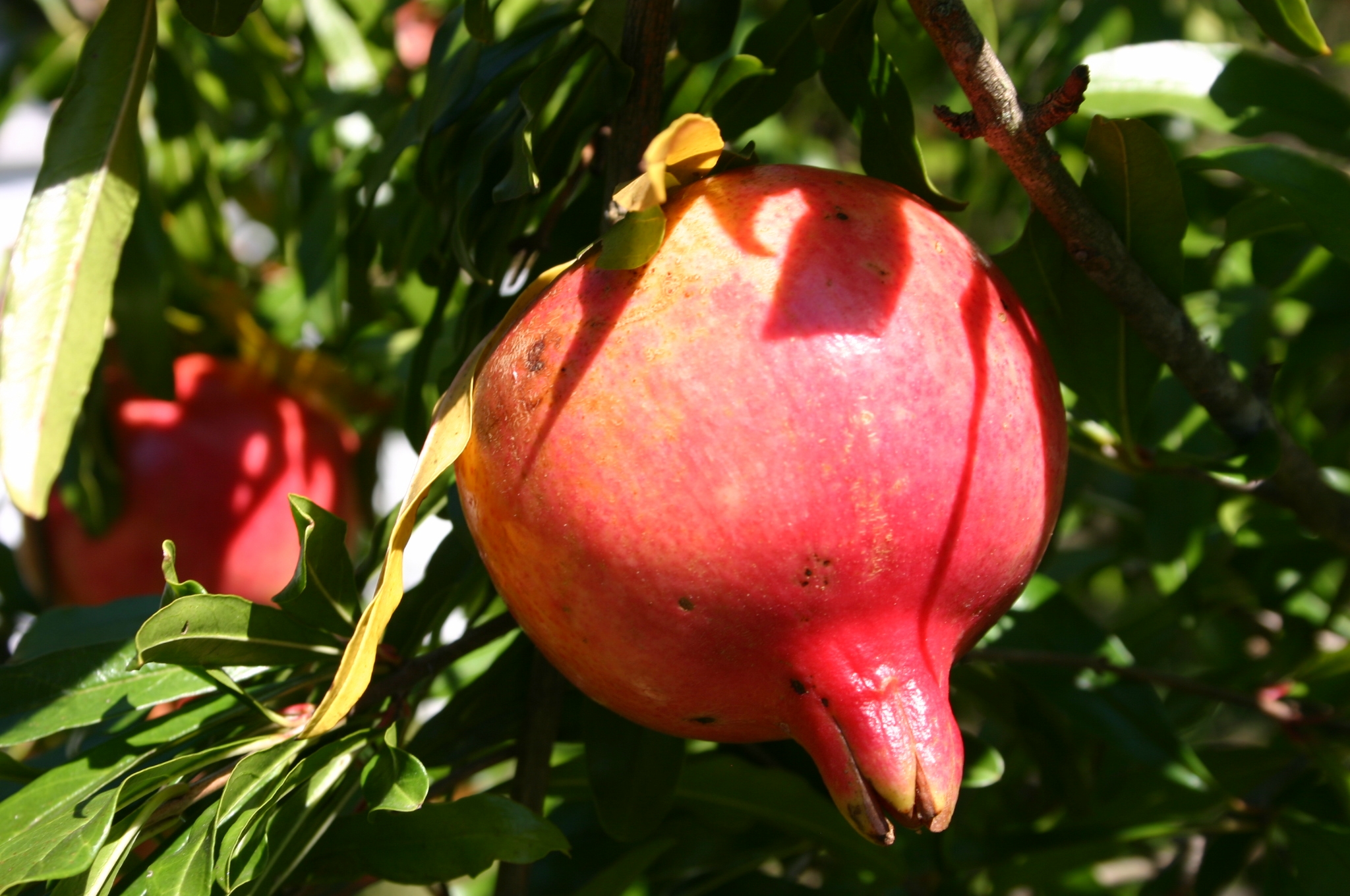
pomegranate fruit





